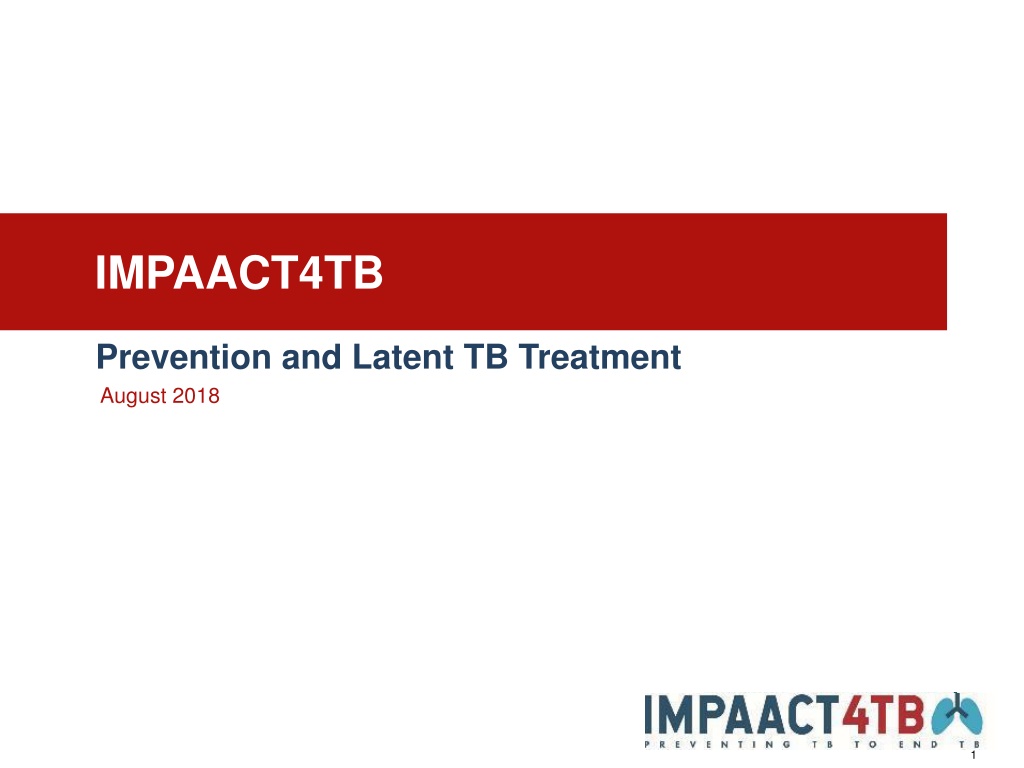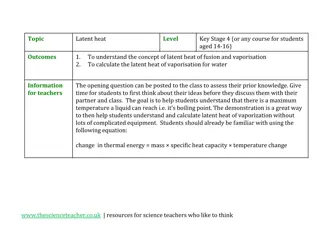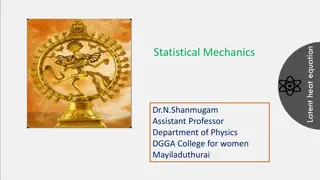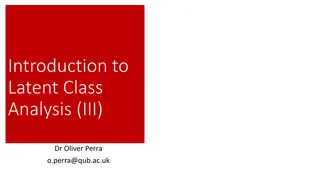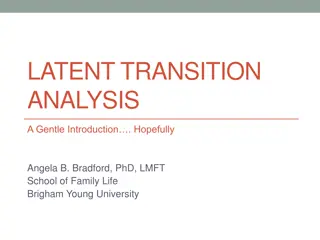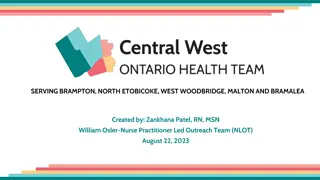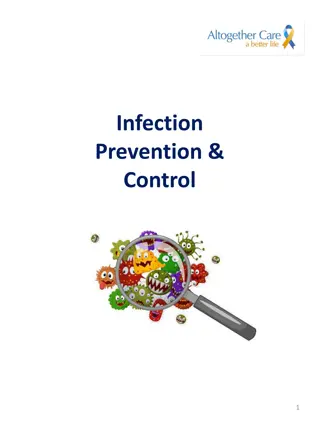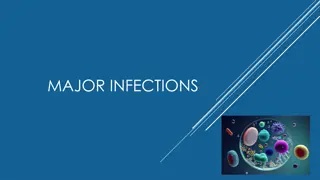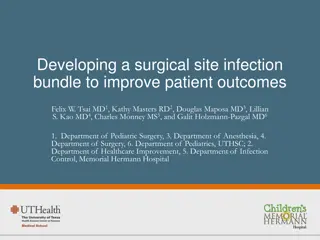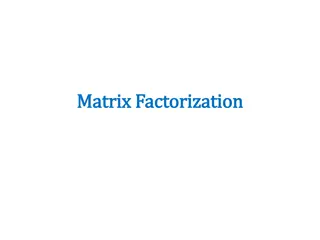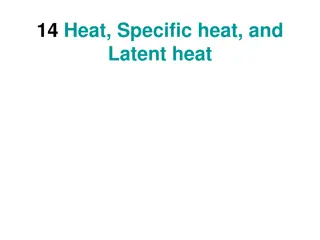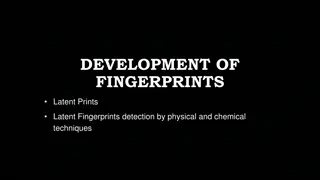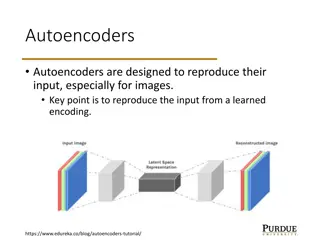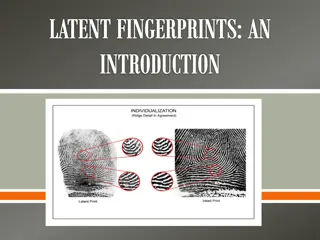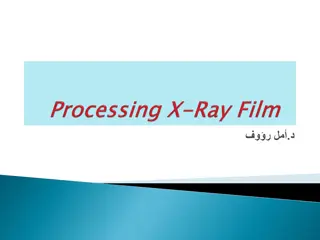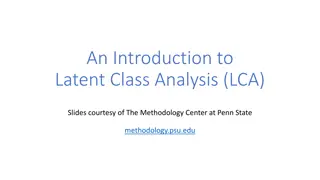Understanding Latent TB Infection and its Implications
Latent TB infection serves as a reservoir for active TB disease, posing a significant global health burden, especially among high-risk populations such as people living with HIV and household contacts of TB patients. With 1.7 billion people estimated to be infected with LTBI globally, targeted interventions are essential to prevent disease progression and achieve TB elimination by 2050. The WHO updated guidelines in 2018 emphasize the importance of identifying at-risk populations, excluding active TB cases, diagnosing latent TB, and providing appropriate treatment.
Download Presentation

Please find below an Image/Link to download the presentation.
The content on the website is provided AS IS for your information and personal use only. It may not be sold, licensed, or shared on other websites without obtaining consent from the author. Download presentation by click this link. If you encounter any issues during the download, it is possible that the publisher has removed the file from their server.
E N D
Presentation Transcript
IMPAACT4TB Prevention and Latent TB Treatment August 2018 1
Latent TB is the asymptomatic reservoir for active TB disease Latent TB Active TB TB lives but does not grow in body Does not cause symptoms Is not contagious Can advance to active TB disease TB is active and grows in body Causes symptoms and ill feeling Is contagious Can cause death if not treated Latent TB Infection (LTBI) is defined as a positive test of TB infection without evidence of clinically active TB 1.7 billion people are infected with LTBI globally People living with HIV are 20-30 times more likely to develop active TB disease than people without HIV Household contacts of TB patients have an increased risk of developing TB, especially children under 5 2
1.7 billion are infected with LTBI, but WHO guidelines recommend treatment for select high risk groups All Latent TB infection = 1.7B Total number of individuals exposed and infected Lifetime risk to disease progression in the general population is 5-10%; risk is highest in first 2yrs post-exposure People recently infected with latent TB1 = 56M People in high risk group2 = 25-30M Annual risk to disease progression in PLHIV is 8-10%; Risk of progression to active TB in household contacts is 25x higher than the general population in first year post- exposure People on IPT = 1.5M PLHIV account for >85% of this group NOTES: 1.People infected in preceding two years; the risk of progression to disease is highest in in the initial two years 2.People in the high risk group is comprise of PLHIV and all contacts of TB patients 3 3
Treating LTBI, especially in high risk populations, is essential to eliminate TB by 2050 Impact of TB interventions on TB Incidence PLHIV Source: WHO Global TB Report 2017 End TB strategy target is >90% coverage for PLHIV Global uptake is low majority of uptake occurs in SA In 2016, 41% of countries were providing Isoniazid Preventative Treatment (IPT) Active TB is in the top 10 killers children under 5 years One million children developed active TB and 170,000 children died as a result of TB in 2015 Contacts <5 yrs. Achieving TB elimination requires a direct attack on the reservoir of latent infection, with a drug or a vaccine (or both) that is effective against established infection. Dye, et al. 4 4
The WHO updated the global guidelines for LTBI management in 2018 3 1 2 Identify population at risk in country & exclude active TB among contacts Diagnose latent TB Treat for an appropriate time Systematic screening and treatment in high risk populations (adults & children living with HIV) Interferon-gamma release assays (IGRA) Isoniazid therapy for 6 months Rifapentine +INH for 12 weekly doses OR Mantoux tuberculin skin test(TST) Rifampicin + INH for 3 months daily doses Testing for TB contacts & treating children (at least children <5years old) INH 36+ months for adults and adolescent PLHIV in high incidence settings OR Assume LTBI based on exposure or a weak immune system due to HIV in high burden settings (after excluding active TB) LTBI treatment prevents progression from latent TB to active TB Testing for TB and treating other risk groups (prisoners, HCW, immigrants, homeless, drug users, diabetics) Source: WHO Latent TB Guidelines 2018 5 5
Summary of WHO-recommended LTBI regimens Dose per kg body weight Treatment Recommendation Costs Attributes Cheap, effective Recommended for all (adults, children and PLWHA) Toxicity, long treatment Low uptake, low adherence (long regimen) Low toxicity High adherence (short regimen) Recommended for all risk groups (adults, children and PLWHA) Not yet recommended for children <2 years/No pediatric-FDC (yet) Side Effects INH 6 months [9H] Recommended for adults and children in high and low incidence settings (Strong - existing) $6 months of INH approx. $3.50 for an adult Hepatotoxicity Neuropathy** Adults 5 mg Children, 10 mg (range, 7-15 mg) RPT+INH 3 months weekly* [3HP] (high burden settings) May be offered as an alternative to 6m INH for adults and children (Conditional - new) $47-$46 for RPT with an additional $1-$2 for INH Hepatotoxicity Neuropathy Jaundice Rash, diarrhea, loss of appetite; Stomach pain Thrombocytopenia, purpura Nephrotoxicity Urine Orange coloration Isoniazid: Adults 5mg Children 10 mg (range 7-15 mg) Rifampicin: Adults 10 mg Children 15 mg (range, 10-20 mg) High adherence (Short regimen, FDC available as well as pediatric formulations) Low Toxicity (among children) Recommended for children only (<15years) RIF+INH 3 months daily [3HR] Should be offered as an alternative to 6m INH for children and adolescents <15 (Strong - new) 3 months of HR for a child (12- 15kg weight band) approx. $9 Hepatotoxicity Neuropathy Skin discoloration Nausea, vomiting, diarrhea, loss of appetite; Stomach pain; headache; joint pain; or. Mild skin rash Individuals aged >= 12 years: Isoniazid: 15mg Individuals aged 2-11: Isoniazid: 25 mg Rifapentine: 10.0-14.0 kg: 300 mg 14.1-25.0 kg: 450 mg 25.1 kg 32.0 kg: 600 mg 32.1 kg 50.0 kg: 750 mg >50 kg: 900 mg INH 36+ months Recommended for adult and adolescent PLHIV (Conditional - existing) * Rifapentine + isoniazid can be administered with ART regimens containing efavirenz and raltegravir. Ongoing studies on the safety with dolutegravir therefore do not administer with regimens containing dolutegravir. ** To reduce neuropathy needs concomitant treatment with pyridoxine 6
3HP has the least toxicity and best patient adherence of WHO- recommended LTBI regimens 3HP is more tolerable 3HP has better adherence When compared to IPT, 3HP treatment results1 in: 72 more completed patient courses per 1000 in children over 2 195 more completed patient courses per 1000 in PLHIV 131 more completed patient courses per 1000 in adult TB contacts When compared to IPT, 3HP treatment results1 in: 2 less adverse events per 1000 in children over 2 43 less adverse events per 1000 in PLHIV 8 less adverse events per 1000 in adult TB contacts 3HP is already performing well in global populations 3HP is stronger at killing TB bacteria Pakistan: The Zero TB Cities Initiative started >3000 household contacts on 3HP South Africa: National Department of Health TB Tank endorsed 3HP and country intends to start scaling up 3HP ASAP USG PEPFAR 3 includes 3HP and new indicators for TB preventative therapy Global Fund updated & new grants to include 3HP When compared to IPT, 3HP treatment results1 in: 6 less new active TB cases per 1000 in children over 2 14 less new active TB cases per 1000 in PLHIV 2 less new active TB cases per 1000 in adult TB contacts 1. Pease, BMC Infectious Diseases, 2017 PREVENT TB Trial 7
When considering 3HP compared to the other prevention options for PLHIV and children, 3HP maintains a strong position QTIB 3HR 3HP Best Adherence Short Regimen Child Contacts 2-5 yrs PLWH <350 CD4 only Efficacy There are no studies to directly compare 3HP with 3HR or QTIB however 3HP provides optimal benefit across desired criteria 3HP demonstrated stronger results for adherence then QTIB and 3HR 3HP is an optimal solution for all HIV positive and TB child contacts over 2 years of age The recommendation for 3HR for under 2 is based on low quality evidence WHO recommendation for 3HR was based on low quality evidence and largely due to the pediatric FDC availability 3HR is likely to remain the preference for pediactrics until Sanofi completes production of a pediatric FDC QTIB: cotrimoxazole plus isoniazid and vitamin B6 8
The IMPAACT4TB project aims to increase the demand for and uptake of 3HP Reduce TB incidence and deaths among PLWHIV and child contacts through sustainable implementation of affordable, quality-assured 3HP Project Goal: Output 1: Establish a price agreement for Rifapentine with the innovator in the short term and with generic manufacturer(s) in the long term (global level) Output 2: Accelerate development and filing of Rifapentine with a global level SRA (WHO PQ and/or FDA) and country National Drug Regulatory Agencies, through an incentive grant, by generic manufacturers Output 3: Initial scale up of 3HP for PLHIV supported (country level) Output 4: Initial scale up of 3HP for child contacts supported (country level) Output 5: Evidence generated and disseminated for optimal use of 3HP and scalable models of delivery (global and country level) Output 6: Engage with WHO to ensure the successful implementation of the IMPAACT4TB and other Unitaid TB projects (global and country level) Outcome: Number of PLWHIV and child contacts<5 years starting treatment with affordable, quality-assured 3HP increased and WHO policy revised based on evidence 9
IMPAACT4TB aims to catalyze uptake of TB prevention by driving down the price of 3HP As more countries adopt 3HP and demand increases, more manufacturers will enter the market to produce 3HP and the price will adjust downward in response to market forces. 10
CHAI will be the lead implementer in four of twelve countries included in the IMPAACT4TB Project Zimbabwe, Tanzania, Mozambique, Ethiopia, Malawi Low income countries Indonesia, Kenya, Ghana, India, Cambodia Low Middle Income Countries South Africa, Brazil High Middle Income Countries 11
Over the next four years, CHAI will support market access, roll-out and 3HP uptake FIGURE: IMPAACT4TB Timeline for PK Study and Implementation Phases 2017 2018 Q1-2 '19 Q 3-4 '19 2020 2021 Sep Oct Nov Dec Jan Feb Mar Apr May Jun Jul Aug Sep Oct Nov Dec Preparation Group 1A Enrolment Follow-up 1A 1st Interim Analysis PK data analysis Group 1B & 2 Enrolment Follow-up 1B and 2 2nd Interim Analysis Final Results Full country-level implementation, develop, file and commercialize all supplier products, demonstration projects and implementation research studies Grants begins, regulatory approvals and grant management structure set-up NO safety or PK concern after 1st interim analysis , so continue with Group 1B and 2 PK and Safety Study. Supplier Engagement: 3HP pricing strategy and negotiations, business case, commmunication to suppliers. RFP for generics launched in August 2018 and access price by Sept 2018. If no safety or PK concerns for 2nd interim analysis , begin country start-up preparation and assessment actvities. 3HP DTG Drug to Drug Interaction PK and Safety Study. Supplier Engagement: Market Intelligence, COG analysis, Product Commercialization Plan and Value Proposition Phase 1 Phase 2 Phase 3 12
Phase One ensures that 3HP can be safely taken with leading HIV treatment options Phase One Objectives: To establish essential management structures and conduct a safety and PK study. Start of supplier engagement activities Market Intelligence Cost of Goods Analysis Demand Estimation PK Study period Jan 2018 Dec 2018 TBTC35 STUDY Objective: Safety and PK of rifapentine FDC in children 0-12 years Identify dosage of water dispersible tablet FDC required for children under 2 Study Population: HIV uninfected children in Stellenbosh, South Africa Update: IMPAACT4TB will be supporting an additional site In Soweto to accelerate completion of trial N=60 Pharmacokinetics (PK) STUDY 3HP/DTG safety study evaluates the safety, tolerability, and drug-drug interactions of short-course treatment of latent tuberculosis infection with high-dose rifapentine and isoniazid among HIV-infected patients taking dolutegravir-based antiretroviral treatment Primary Objective Evaluate effect of 3HP on the PK of DTG Describe the safety of DTG and 3HP co-administration Secondary Objective Estimate proportion who maintain HIV-1 virologic suppression Describe PK of isoniazid and rifapentine in the study population Examine DTG dosing options when given together with once-weekly HP in people living with HIV requiring LTBI treatment Study Population HIV infected & uninfected pregnant and post partum women N= 82 Update: Interim results indicate no safety issues, final results expected early 2019 Update: IMPAACT4TB will be supporting an additional site in Soweto to accelerate completion of trial Scheduled to start enrolling in late 2018 13
Phase Two gathers market intelligence and costing information to enable market shaping discussions Generic Rifapentine Issue the request for applications for the incentive to support generic companies to develop RPT Activities in Phase Two will lay the groundwork for IMPAACT4TB to achieve an access price and begin delivering 3HP to high risk populations in country Procurement Obtain import waivers and begin mapping procurement process PK Study No safety signal or PK concern identified in study proceed with Phase 2 Access Price Negotiate the access price for 3HP Market Intelligence Gather market intelligence and conduct cost of goods analysis required for initial price negotiations for rifapentine Country Prep Begin in country preparation and planning work 14
Phase Three supports countries with plans for procurement and supports delivery of 3HP to target populations Landscape Analysis Supply Chain Management Help obtain regulatory approval for 3HP Map current procurement process and fill gaps if necessary Coordinate procurement with GDF Conduct survey of TB preventative therapy current practices in country Complete supply chain and quality improvement assessment 3HP Adoption Rollout & Uptake Technical Support Adoption & Roll Out Planning Support MoH adoption of updated WHO LTBI guidelines Train HCWs on new guidelines, reporting, educational materials Identify sites for 3HP Collaborate with in country implementing partners on TPT Provide communications to increase awareness of 3HP M&E Implementation Research Support strengthening of routine M&E for TB preventative therapy Support M&E tool revision to include 3HP Enroll patients at selected sites in Chennai as per protocol Analyze data and demonstrate feasibility and effectiveness of 3HP TPT: TB Preventative Therapy 15
Appendix 16
This is an opportunity to join a global movement to move us closer to TB elimination Call to action We need to create demand for short course preventive therapies among people who stand to benefit the most from their use in order to move the market and TB community to prioritize treatment of Latent TB We need to drive down the cost of Latent TB treatment so that all countries can afford preventative therapies for their citizens We need to add TB prevention to every place we treat TB in order to move towards TB elimination How countries can play a role Update national TB guidelines to include 3HP as an option for TB preventative treatment Grant import waivers for 3HP to enter into country Include 3HP in TB program forecasts and quantifications Facilitate sensitization, education and training for health care workers to deliver 3HP for PLHIV and TB contacts Include 3HP in M&E tools 17
Uptake of LTBI treatment in high risk groups will depend on how the different key product, program and policy elements come together at the country level Product Ideal product profile: Initially, 150mg/300mg single and a dispersible formulation for pediatric patients Products are optimally packaged for in-country distribution and dispensing Product registered in-country Product available at a price that makes it cost-effective when compared to IPT Global Policy Program Generate additional evidence on use of 3HP without direct observation National policy: Inclusion in national guidelines Implementing planning: Quantification and procurement planning Health worker training Case finding Strengthening of contact tracing and active case finding among household contacts to reach RPT-eligible population Funding Support to include TB prevention and 3HP in national budgets and Global Fund requests Additional funding sources (i.e. PEPFAR,CDC) Generate additional evidence on cost effectiveness and programmatic practicality of 3HP to achieve a strong WHO recommendation Garner additional donor support to implement new guidelines in country 18
3HP is the preferred TB preventative therapy based on efficacy, tolerability and patient adherence Rifapentine more effectively kills TB bacteria than Rifampicin Patient adherence to 3HP is better adherence to IPT Bactericidal Adherence 3HP Tolerability Efficacy Studies show 3HP has less adverse events then IPT 3HP is at least as efficacy as IPT in non-inferiority studies 19
Past studies also reflect that 3HP is non-inferior to IPT Study 26: High risk persons in US, Canada, Brazil & Spain Risk of TB or Death in Intention to Treat Population There were no significant differences in the incidences of tuberculosis or death between any of the three groups treated with the newer regimens and the control group The 3-month regimen of INH + RPT (3HP) is Safe and Effective in HIV infected patients and is as effective as 9H Source: Sterling NEJM 2011; 365: 2155 Source: Martinson NEJM, 2011 20
Why Rifapentine? Background Manufactured by Sanofi under brand Priftin Currently no generic version available Priced at $72/patient course as part of 3HP regimen vs. IPT $9/patient course Currently not registered in South Africa and many other countries that would benefit Awaiting WHO guidelines targeting LMICs Benefits Shorter treatment for latent tuberculosis than IPT alone with potential to improve adherence Longer half-life and greater potency against MTB than rifampin Effective (in combination with INH) in the continuation phase of treatment of patients with low bacillary burden Can be safely used with efavirenz 21 21
Comparison 3HP against 6/9INH Outcomes among children (>2yrs) RR/CI Absolute Quality of Evidence ACTIVE TB 0.132 (0.007-2.542) 6< per 1000 (7-11+) Moderate ADVERSE EVENTS 0.875(0.320-2.396) 2<per 1000 (11-23+) Low COMPLETION RATE 1.089 (1.030-1.153) 72>per 1000 (24-124) Moderate Outcomes among PLWHA RR/CI Absolute Quality of Evidence ACTIVE TB 0.733 (0.234-2.295) 14<per1000 (41-70+) Moderate ANY ADVERSE EVENT 0.627 (0.426-0.921) 43<per1000 (9-66) Moderate COMPLETION RATE 1.255(1.014-1.553) 195>per 1000 (11-422) High Outcomes among Adults (HIV-) RR/CI Absolute Quality of Evidence ACTIVE TB 0.438 (0.179-1.074) 2<per 1000 (0-3) Moderate ADVERSE EVENTS 0.873(0.733-1.040) 8<per 1000 (3-17) Low COMPLETION RATE 1.190(1.159-1.221) 131>per 1000 (24-124) Moderate The PREVENT TB trial was able to demonstrate non-inferiority of 3HP compared to 6INH. It must be noted that the RR related to afficacy at preventing TB are always lower in all studies for 3HP/INH in all studies, although CI are wide, especially among children. RR also also below 1 for toxicity and higher than 1 for adherence among all 3 populations, although the CI among children are wide) 22
Comparison 3RIF+INH against 9INH among children <15years Outcomes RR/CI Absolute Quality of Evidence ACTIVE TB (demonstrate through xRay) 0.492 (0.318-0.762) 122<per 1000(57-164) Low ADVERSE EVENTS 0.332(0.197-0.559) 83<per 1000(55-100) Very Low COMPLETION RATE 1.07 (1.01-1.14) 60>per 1000 (9-121) Low The recommendations is based on a single RCT not blinded with serious methodological faults, due to which the evidence behind the recommendations has been downgraded to low or very low for the critical outcomes 23
The IMPAAC4TB Consortium is composed of leaders in the fight to eliminate TB Lead Aurum is the overall technical lead and will head project management of the project across the consortium. Aurum will be the lead implementing member in South Africa, Ghana and Mozambique. KNCVwill contribute to the overall project goal and the delivery working group. KNCV will be the lead organisation in five countries (Malawi, Tanzania, Ethiopia, and Indonesia) and will implement strategies to enhance adoption, demand and delivery of 3HP, along with generating evidence to support scale-up and policy change. John Hopkins University will lead on planned modelling activities and proposed implementation research. JHU is leading the implementation studies and modelling the impact and cost-effectiveness of scaling up 3HP and will assist country-based NGO partners in Brazil and India in designing, implementing and evaluating delivery strategies. Core Partners CHAI will be the lead implementing member in Cambodia, India, Kenya and Zimbabwe. CHAI will lead the supply and procurement strategy in addition to supporting the other output areas. CHAI will also assist with delivery of 3HP by providing assistance with quantification, forecasting, drug procurement and supply chain management. Global Drug Facility, Stop TB Partnership will be the procurement agent for the consortium. Collaborating Treatment Action Group is a technical member responsible for mobilizing civil society and leading advocacy to support IMPAACT4TB. TAG will educate, organize, and mobilize trusted civil society organizations and activist partners in IMPAACT4TB countries to advocate for the demand and adoption of 3HP for PLHIV and child contacts under 5. Partners World Health Organization will contribute to the adoption of 3HP and other evidence generated from the project through global policy development. WHO will also facilitate the adoption of national M&E systems and standardized WHO indicators. 24
There are two methods of testing to chose from, however TST is the only method largely available in LMICs TST IGRA Tests for Latent TB Can distinguish between latent TB and active TB Requires trained personnel to administer Requires second visit for result reading Can distinguish between BCG vaccine and LTBI Can detect future episodes of exposure Can be easily interpreted in high burden settings Can be easily interpreted in HIV positive individuals Is relatively costly A positive TST is no longer recommended as a requirement to determine IPT eligibility due to operational difficulties, common false negatives in persons with HIV, and the high rates of LTBI and re-infection in many high-burden TB countries 25
Algorithms for screening household contacts and other at-risk populations 27
LTBI treatment uptake is very low and opportunities exist to increase access to this essential component to TB control Reasons for poor uptake Opportunities New formulations and regimens that are shorter and more effective Lower pill burden Ease of administration Increasing donor focus CHAI Initiatives UNITAID IMPAACT4TB Cambodia, India, Zimbabwe and Kenya CHAI focus, among a larger consortium of countries to increase uptake of preventive treatment 28
Thank you! 29
Latent TB Infection (LTBI) LTBI is defined as a positive test of infection without evidence of clinical active TB 1.7 billion people infected with TB globally Latent TB Infection is the seed bed for developing TB disease & continued transmission We cannot eliminate TB unless we address LTBI 31
People living with HIV & household contacts are at increased risk of developing TB People living with HIV are 20 to 30 times more likely to develop active TB disease than people without HIV. Persons living in the same household as TB patients have an increased risk of developing TB, particular children <5 years 32
Treatment for LTBI Primary aim in treating LTBI is to prevent progression to active disease In high burden settings, 2018 WHO Guidelines recommend 6H for children living with HIV 36H for adolescents/adults living with HIV with a positive TST 3RH (in individuals <15 yo) 3HP in adults and children 33
Treatment for HIV 2016 WHO Guidelines promote use of new ARVs, including dolutegrevir (DTG) as a first line regimen in adolescents and adults DTG is well-tolerated, inexpensive to manufacture and has a high barrier to resistance. 34
IMPAACT4TB Increasing Market and Public health outcomes through scaling up Affordable Access models of short Course preventive therapy for TB 35
Public health case for investing in 3HP Implementation of WHO guidelines for Isoniazid Prevention therapy (IPT) for PLWHIV and child contacts remains poor A short-course regimen of isoniazid and rifapentine weekly for three months (3HP) is now available 3HP is associated with less toxicity, better adherence & similar efficacy to IPT and may be logistically easier for programmes to scale up Scaling up 3HP will avert TB cases & deaths 36
IMPAACT4TB Unitaid is investing US$59 million over 4 years with Aurum as the prime recipient IMPAACT4TB will utilize the Unitaid grant to start an estimated 400,000 people on 3HP, representing 1.5% of the potential market in project countries 37
IMPAACT4TB: Goal and outcomes Project Goal: Reduce TB incidence and deaths among PLWHIV and child contacts through sustainable implementation of affordable, quality-assured 3HP Output 1: Establish a price agreement for Rifapentine with the innovator in the short term and with generic manufacturer(s) in the long term Output 2: Accelerate development and filing of RPT or 3HP FDC with a global level SRA and NDRAs through an incentive grant, by generic manufacturer(s) Output 3: Initial scale up of 3HP for PLHIV supported Output 4: Initial scale up of 3HP for child contacts supported Output 5: Evidence generated and disseminated for optimal use of 3HP and scalable models of delivery Outcome: Number of PLWHIV and child contacts<5 years starting treatment with affordable, quality-assured 3HP increased and WHO policy revised based on evidence
PHASE 1 - September 2017 April 30 2018 To establish essential management structures and conduct a safety and PK study. Start of supplier engagement activities Market Intelligence Cost of Goods Analysis Demand Estimation PK Study period Jan 2018 Dec 2018 41
Table of Options GDF prices with assumption that packs can be split between patients Drug Regimen Price per patient dose Attributes Isoniazid alone for 6 or 9 months, 6H $6 months of INH approx. $3.50 for an adult (6 months * 30 days per month * 1 tablet per day [300mg assuming adult who is not sick would be in the top of the weight band] * $0.019 per tablet [$12.91 the lowest GDF price/672 tablets per box]) Cheap, effective Side effects, poor adherence, low uptake Daily rifampicin alone 3-4 months 3 months of Rifampicin approx. $34.50 for an adult (3 months * 30 days per month * 2 tablets per day [600mg total daily dose] * $0.192 per tablet [$19.20 per box of 300mg tablets/100 tablets per box]) c This is for adults as there is no paediatric friendly single formulation for rifampicin Daily isoniazid plus rifampicin for 3-4 months 3 months of HR for a child (12-15kg weight band which is the most common one diagnosed based on current data) approx. $9 (3 months * 30 days per month * 3 tablets per day * $0.033 per tablet [$2.80 per box of peds FDC/ 84 tablets per box]) Shorter regimen, FDC, child friendly formulation available Children only, side effects Weekly rifapentine plus isoniazid for 3 months (12 doses) $47 - $46 for with an additional $1-$2 for INH- (3 months * 12 weeks * 3 tablets a week [900mg per week/150mg tablet]*$0.625/tablet [$15 per box/24 tablets per box]) Shorter regimen, less toxicity, better adherence Higher cost 4-in-1 FDC -Daily isoniazid plus cotramoxizole for 6 months About $12 (multiply the monthly cost of $1.99 for the 6 months recommended of INH but could go up to the full 36 months that is also recommended for PLWHIV which would be $72) Easier supply chain management, lower pill burden, Reformulated product, hypersensitivity 1HP approx. $75 USD per adult plus INH component (1 month * 30 days * 4 tablets a day [600mg per day/150mg tablet]*$0.625/tablet [$15 per box/24 tablets per box]) Investigative drug, highly- effective, ultra-short course regimen 43
3HP/DTG safety & PK study Safety, tolerability, and drug-drug interactions of short-course treatment of latent tuberculosis infection with high-dose rifapentine and isoniazid among HIV-infected patients taking dolutegravir-based antiretroviral treatment 44
Why the Safety and pharmacokinetic (PK) study? A drug-drug interaction study of DTG and RPT and isoniazid among healthy volunteers reported hypersensitivity reactions in two of four participants. Due to the safety concern of administering 3HP to PLHIV on a DTG-based regimen, a safety and PK study of 3HP and DTG will be conducted in South Africa TBTC 35 FDC Paediatric 45
Study Objectives Primary Evaluate effect of 3HP on the PK of DTG Describe the safety of DTG and 3HP co-administration Secondary Estimate proportion who maintain HIV-1 virologic suppression Describe PK of isoniazid and rifapentine in the study population Examine DTG dosing options when given together with once-weekly HP in people living with HIV requiring LTBI treatment
PK and Safety Study Updates DTG/3HP safety & PK study Group 1A (12 participants) enrolled Independent Safety & Monitoring Committee Safety data shared with Unitaid and WHO DTG guideline committee PK data currently being analysed Call with SMC to approve DTG dose for Group 1B and Group 2 scheduled DTG in pregnant women DTG associated with 10x> risk of neural tube defects compated to EFV Women in 3HP/DTG safety & PK study will be counselled on risk of neural tube defects re-consented if they elect to remain on study tested frequently for pregnancy Kept on two effective forms of contraception 47
PHASE 2 May 2018 December 2018 If the interim analysis does not show any safety or PK concern, we will continue with Phase 2 We will gather market intelligence and conduct a cost of goods (COGs) analysis required for the initial price negotiations for rifapentine, Begin in-country preparation work, Negotiate the access price for 3HP, Obtain import waivers, Issue the request for applications for the incentive to support generic companies to develop RPT 49
PHASE 3 January 2019 August 2021 Phase 3 will commence if the final safety and PK results do not show any concerns, we will procure product, start with 3HP implementation in PLHIV and child contacts, support generic companies to develop RPT, conduct the implementation research and collaborate with WHO on the programmatic management of latent TB infection. 50
